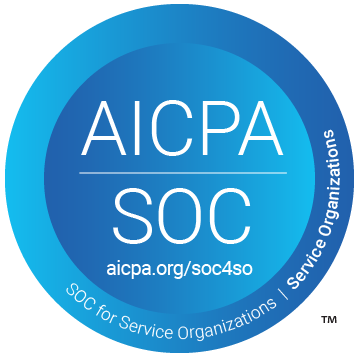- Solutions
-
Products
-
Resources
Sales Automation Tools | Cirrus Insight by Kristi Campbell View all Blog Posts >Get the App, Get the Sidebar, & Get Your Trial Going HereUnleash limitless growth opportunities by partnering with Cirrus Insight.
- Pricing
Filter By:
Lessons From a Chief Revenue Officer (CRO) About Aligning Sales and Marketing
Aligning sales and marketing teams is one of the most persistent challenges in B2B organizations. While both departments share the ultimate goal of driving revenue, they often operate with different metrics, timelines, and priorities — leading to disconnected efforts and missed opportunities.
But what if there was a way to create true alignment? To answer this question, we sat down with Amy Green, Chief Revenue Officer at Cirrus Insight.
In this interview, Amy shares her practical advice on breaking down silos, establishing shared metrics, and how to align sales and marketing teams.
How do you ensure that finance, marketing, and sales teams are working towards the same overall business objectives?
This has to be a top-down approach. If leadership has not clearly defined and communicated the key company objectives, then marketing and sales alignment cannot happen.
The first step is defining the company-wide goals, which must include the annual revenue target for new customers and upsell to existing customers, as well as objectives for retaining customers.
From there, we create a “revenue waterfall” in conjunction with finance that breaks down the revenue into specific activities to reach our targets. This includes calculating:
- Pipeline needed to hit revenue targets
- Number of top-of-funnel leads required
- Opportunities that need to be created
- Demos to be performed
- Average opportunity-to-close conversion rate needed to hit revenue objectives
The revenue waterfall gets sales and marketing working towards a common goal because it creates a clear path of measurable activities that connect directly to your revenue targets.
What strategies have you found most effective in breaking down silos between these departments?
If you want to clear the barriers between departments in your organization, you need to get your team members involved early in any initiative. Make sure everyone understands the value they bring to the project right from the start. When your people can take ownership of their role and see how they contribute to success, they’ll be more motivated to collaborate.
Your communication strategy matters too. Keep updates consistent and timely — this ensures your teams stay on the same page, understand their objectives, and see how their work connects to the bigger picture.

What key performance indicators (KPIs) do you use to measure the alignment and collective success of finance, marketing, and sales?
For sales and marketing alignment statistics, we look at metrics across the entire funnel. At the top of the funnel (TOFU), we track new trials, demo requests, marketing engagement through content, paid advertising, social media, webinars, and events. We also monitor how many meetings our Sales Development Representatives (SDRs) are booking.
In the middle of the funnel (MOFU), we track meetings scheduled, meetings performed, and opportunities created. This is where we also track our gross pipeline, weighted pipeline, and pipeline aging.
At the bottom of the funnel (BOFU), we measure opportunities closed, including new bookings and expansion bookings, as well as churn. We also track Average Revenue Per User (ARPU), Annual Contract Value (ACV), and opportunity-to-close conversion rates.
What are the most common challenges you've encountered in aligning marketing and sales? How did you overcome them?
One of our biggest challenges has been working within different financial models and determining which model should drive our internal KPIs. We often find that each department (including our finance department) has its own way of measuring success and tracking progress.
If you're facing similar challenges, I recommend starting with a clear revenue waterfall model. The waterfall helps you track how leads move through each stage of the sales process and convert to revenue. Get your teams together early to agree on how you'll track progress and measure success. Marketing needs to see how many leads convert to opportunities, sales needs to understand pipeline velocity, and finance needs visibility into projected revenue at each stage.
When you establish these frameworks upfront, you create a single source of truth that all departments can work from. This alignment at the beginning prevents confusion and mismatched expectations down the line. Plus, when everyone can see how their activities connect directly to revenue, they will all be more invested in the shared outcome.
How do you balance the conflicting priorities of these departments?
I start by asking critical questions about our revenue performance. What is having the most impact on our revenue number right now? Do we need more pipeline? Are we seeing low conversion rates from meetings to opportunities? Or is our challenge in converting opportunities to closed deals?
When you're trying to balance different departmental priorities, you need to identify the blind spots in your funnel first. Look at where deals are getting stuck or falling through. These trouble spots often indicate where your departments need to align their efforts.
Rather than letting each department focus solely on their individual goals, this approach helps everyone prioritize the areas that will make the biggest difference to overall revenue.

What tools or technologies have you found most useful in promoting collaboration between marketing and sales?
We've found several technology solutions that significantly improve collaboration.
Custom key interaction records in Salesforce help us track our most important KPIs in one place.
Automation is also crucial. We use Cirrus Insight's integrations to automatically capture sales activity data from email and calendar systems and sync it to Salesforce. This gives us accurate, real-time insights into our sales activities while reducing the amount of manual data entry we need to do.
AI technology allows us to aggregate and analyze our waterfall data more effectively, while Cirrus Smart Scheduling tools help convert more top-of-funnel leads directly into meetings with sales. This acceleration of the sales process helps us convert more pipeline into revenue.
When you're choosing collaboration tools, look for solutions that reduce manual work while increasing visibility across departments. The goal is to spend less time on data entry and more time acting on the insights your data provides, so your teams can work together.
How do you involve marketing and sales teams in the financial planning and forecasting process?
The revenue waterfall continues to be our most critical asset when aligning sales and marketing with our financial planning process. Your waterfall creates a framework where everyone can see how their efforts contribute to our revenue goals.
When you involve both sales and marketing in financial planning, start with your revenue targets and work backwards. Marketing needs to understand how many qualified leads they need to generate to fill the pipeline. Sales managers need visibility into how many opportunities they need to create and close. Finance needs to see the conversion rates at each stage to validate the forecasts.
When you bring all these teams together around the revenue waterfall, everyone understands their role in reaching our financial targets. Marketing can plan their campaigns based on the number of top-of-funnel leads needed, while sales can align their activities with pipeline goals. This collaborative approach ensures that your financial forecasts aren't just numbers on a spreadsheet — they are actionable targets that guide daily decisions across departments.
Aligning sales and marketing with the right tools
From our conversation with Amy Green, one thing becomes clear: Aligning sales and marketing starts with a shared understanding of revenue goals and a clear framework for achieving them. The revenue waterfall model helps teams work backwards from targets to create actionable plans.
But frameworks alone aren't enough — you need the right tools to execute effectively. Cirrus Insight’s Smart Scheduler plays a crucial role in bridging the gap between marketing and sales teams. It automatically routes leads to the right sales representatives, ensuring marketing-generated opportunities receive immediate attention.
By eliminating the traditional back-and-forth of scheduling meetings, it helps both teams focus on strategic activities. The tool also optimizes resource allocation and aligns marketing campaign timing with sales team availability.
Want to see how automated scheduling can help your marketing and sales teams work together? Sign up for a free trial of Smart Scheduler and watch your response times drop from days to minutes.

.png?width=1268&height=1772&name=Sidebar-C%20(1).png)


